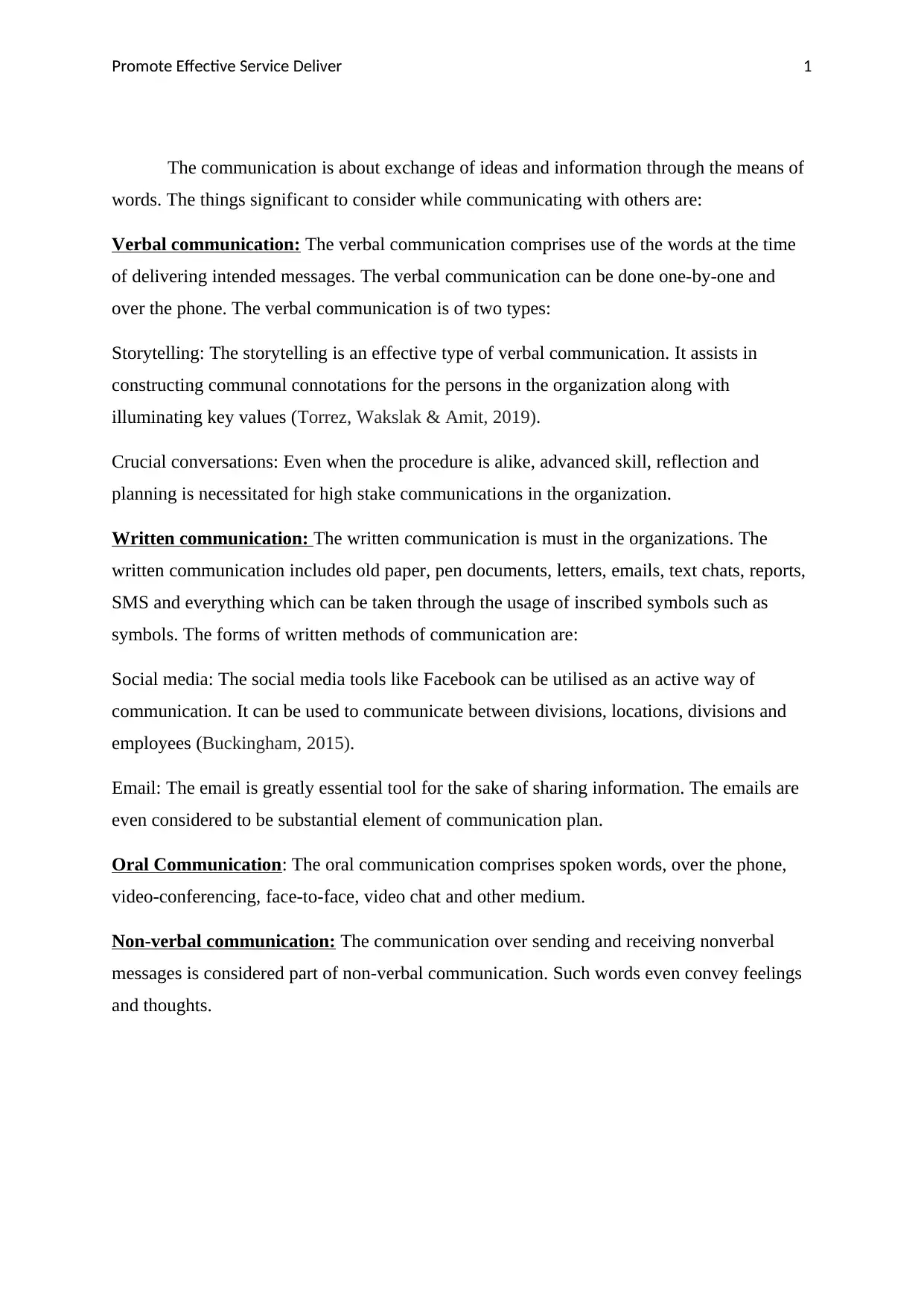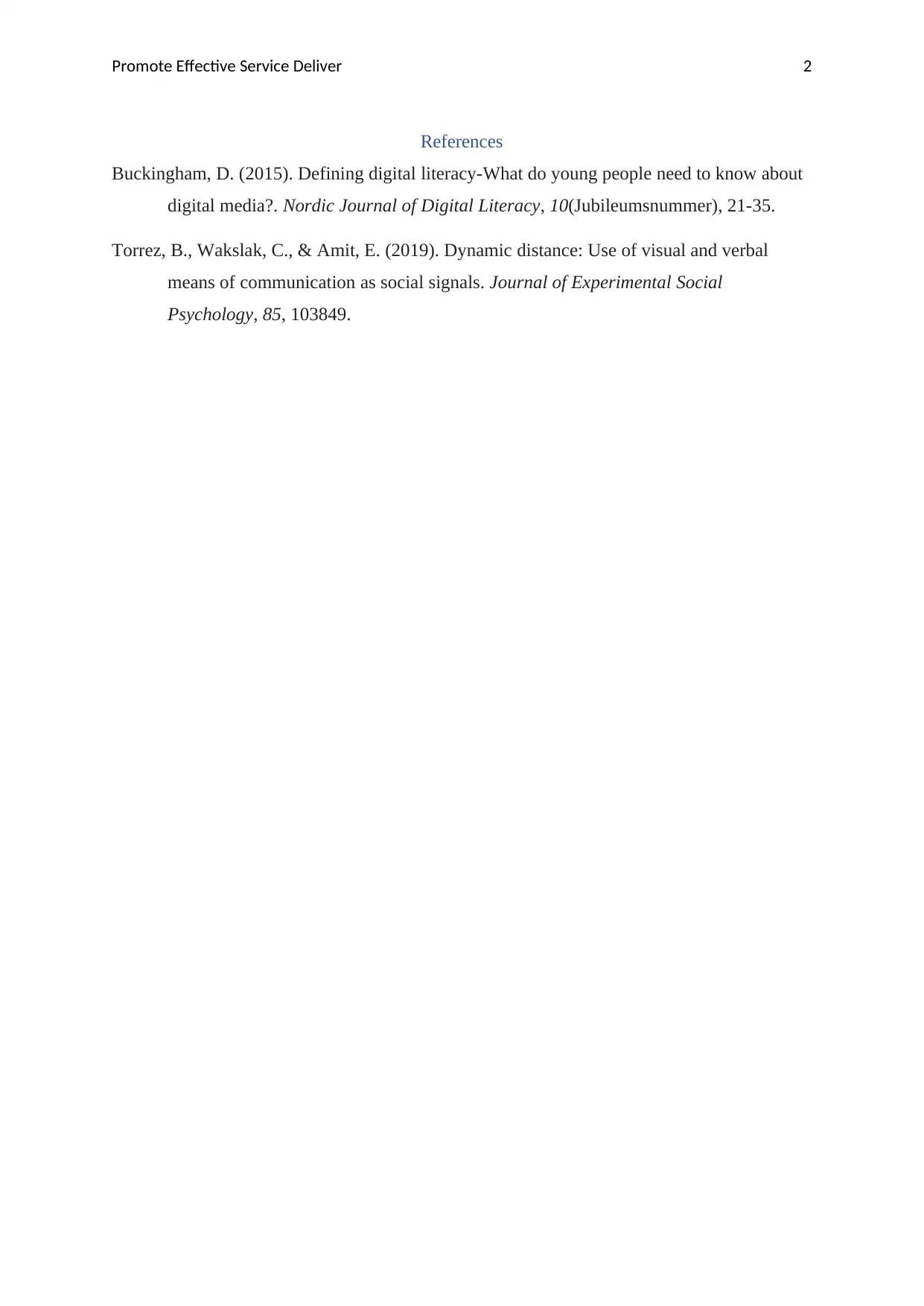Report on Effective Communication in Service Delivery
VerifiedAdded on 2022/09/06
|3
|393
|23
Report
AI Summary
This report delves into the crucial aspects of effective communication within the context of service delivery. It explores various communication methods, including verbal communication, which encompasses storytelling and crucial conversations, highlighting their significance in conveying messages and building relationships. The report also examines written communication, detailing its importance through mediums like social media and email, and discussing how these tools facilitate information sharing and collaboration. Furthermore, the report explores oral communication, emphasizing the role of spoken words and face-to-face interactions in conveying messages. Finally, it discusses non-verbal communication, underscoring the importance of unspoken cues in conveying thoughts and feelings. The provided references offer additional insights into the concepts discussed.
1 out of 3








![[object Object]](/_next/static/media/star-bottom.7253800d.svg)